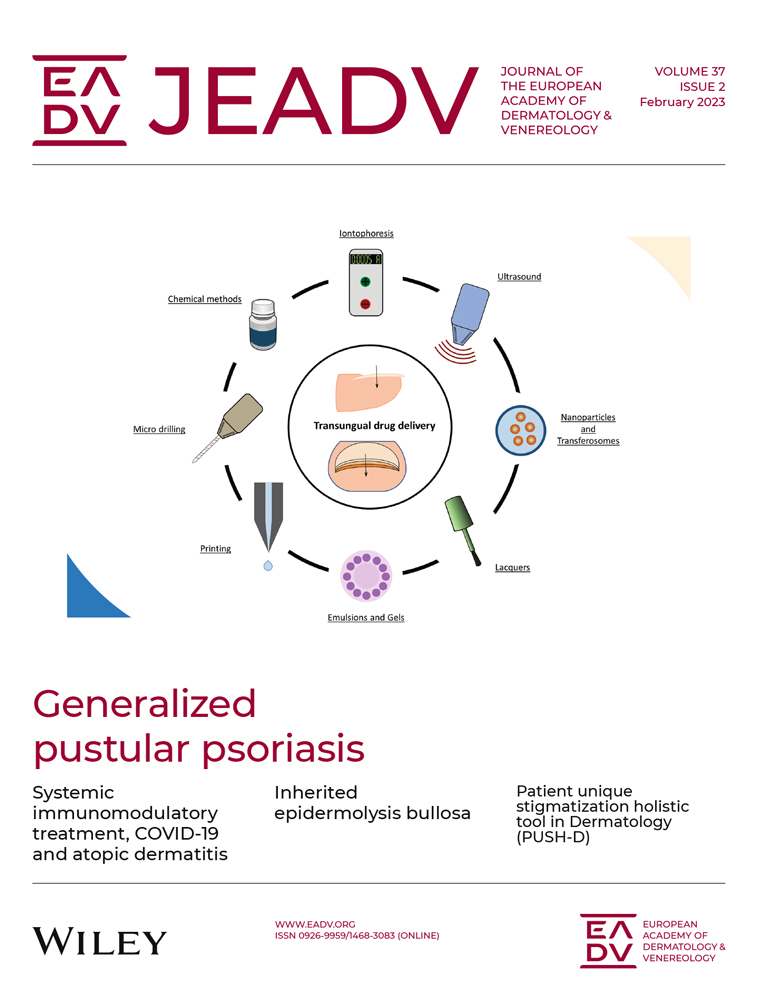Superficial (nodular) thrombophlebitis as a heterogeneous entity with distinctive clinico-pathological aspects: Correlation with the underlying conditions
Abstract
Background
Superficial (nodular) thrombophlebitis, referring to a thrombo-inflammatory disorder of dermal-subcutaneous veins, encompass a spectrum of nodular lesions often associated with inflammatory, infectious, neoplastic or thrombophilic diseases.
Objective
We postulate that distinct clinico-pathological features may correlate with the underlying conditions.
Methods
We conducted a retrospective monocentric study of all patients seen in our dermatology department for a superficial thrombophlebitis, completed with a literature review. Clinical and pathological data were extracted from the patient files and articles.
Results
A total of 108 cases of superficial thrombophlebitis was analysed. Forty-five percent manifested as elongated nodules clearly evoking vascular involvement, while the other 55% were presenting as nodules or plaques. The elongated phenotype was strongly associated with malignancy or thrombophilia if a pure thrombosis was demonstrated histopathologically, while tuberculosis was the main underlying condition if a granulomatous vasculitis was present. Panniculitis-like lesions were mainly corresponding to erythema-nodosum-like lesions of Behçet's disease, characterized by the distinctive feature of thrombotic veins with an associated leukocytoclastic vasculitis.
Limitations
Retrospective design and risk of publication bias.
Conclusion
Superficial (nodular) thrombophlebitis is a heterogeneous entity with a distinct clinico-pathological presentation that strongly points to the nature of the underlying medical condition, thus guiding the medical workup.
CONFLICT OF INTEREST
LG, BC, DL and CL declare no conflicts of interest.
Open Research
DATA AVAILABILITY STATEMENT
Data openly available in a public repository that issues datasets with DOIs




